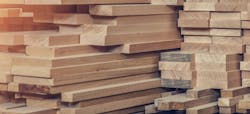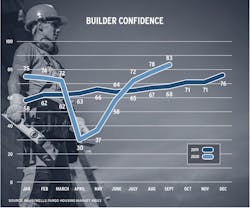What’s Behind the Softwood Lumber Price Spike?
Lumber prices have increased more than 170% since mid-April, driving up housing costs and dampening residential construction’s contribution to an economic recovery.
The price of an average new single-family home has risen more than $16,000, and by more than $6,000 for a new multifamily unit, due to the dramatic rise in softwood lumber costs driven primarily by supply shortages and import tariffs.
Most lumber mills closed due to stay-at-home orders and social distancing measures enacted by state and local governments at the onset of the coronavirus pandemic. Mill operators projected that housing would be adversely affected by the crisis and anticipated a large drop in demand. But housing has weathered the storm much better than anyone predicted, and demand for lumber remains high.
The National Association of Home Builders (NAHB) is asking the U.S. Lumber Coalition to find ways to increase production to meet strong demand, and is calling on Congress to open up additional federal forest lands for logging in an environmentally sustainable manner.
In addition to the shortage of domestic lumber, tariffs—averaging more than 20% on Canadian lumber shipments into the U.S.—are contributing to the record-high lumber prices.
The NAHB asked President Trump in August to take prompt action on lumber-supply shortages and soaring prices and also urged Commerce Secretary Wilbur Ross and U.S. Trade Representative Robert Lighthizer to alleviate this growing threat to housing and the economy by working with Canada on a new softwood lumber agreement that would end the tariffs.
Builder Confidence Sets a Record
Builder confidence for new single-family homes increased another five points in September to 83, breaking the record set in August (which tied with December 1998) as the all-time high mark in the 35-year history of the National Association of Home Builders/Wells Fargo Housing Market Index (HMI).
Despite rising costs and delays for building materials (especially lumber prices, which are up more than 170% since mid-April), historical sales traffic numbers driven by pent-up demand and low mortgage interest rates are driving up confidence in the market’s near future.
Another factor, driven by COVID-19 ripple effects, is increased migration to the suburbs and exurbs, as builders report customers in high-density markets asking about relocating to lower-density areas.
The HMI measures builder perceptions of current single-family home sales and sales expectations for the next six months, as well as builders’ sense of prospective buyer traffic. It’s yet another indicator that shows housing is poised to lead the nation in an economic rebound.
Read or download a PDF of this article in Pro Builder's September/October 2020 digital edition


